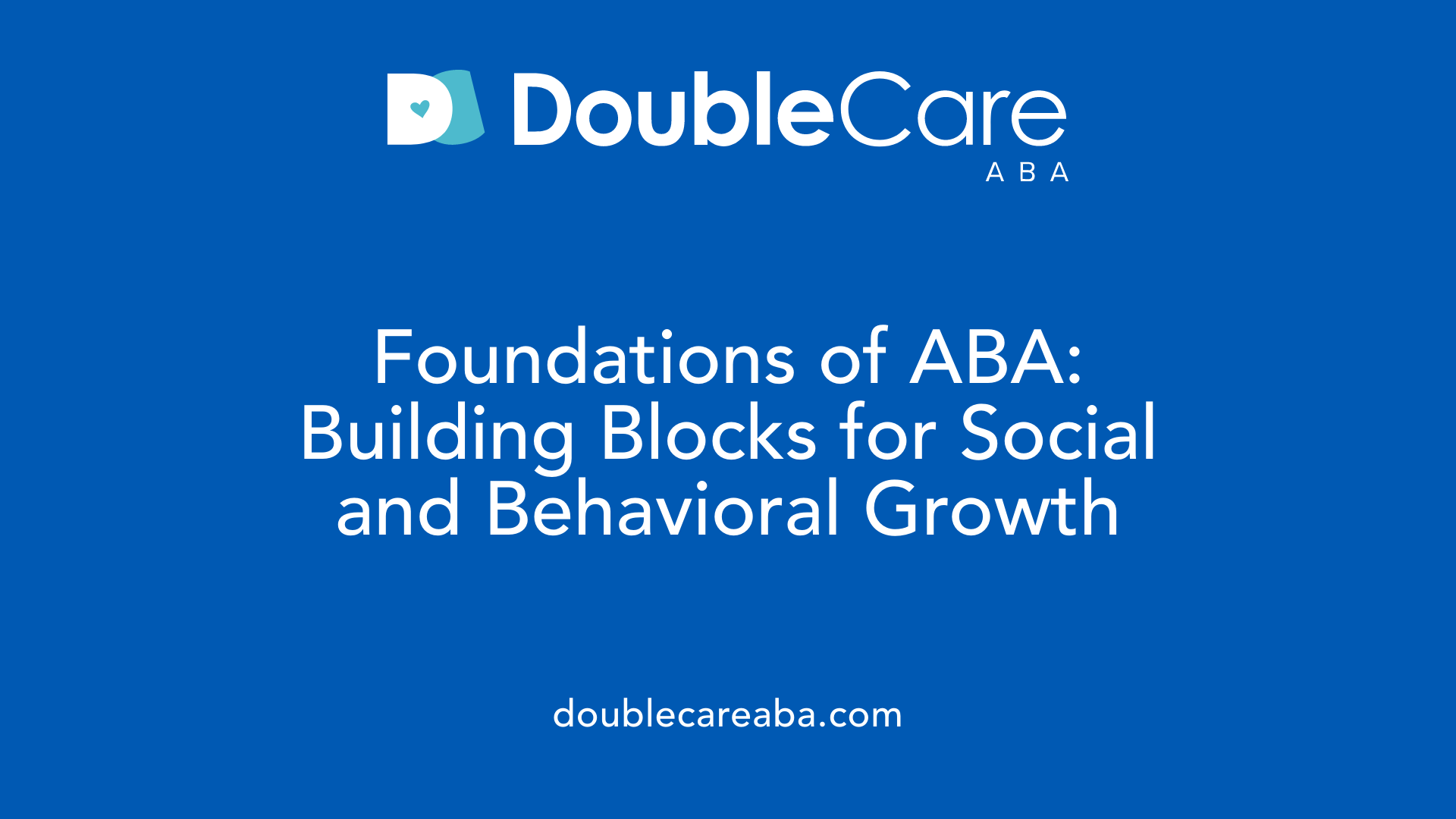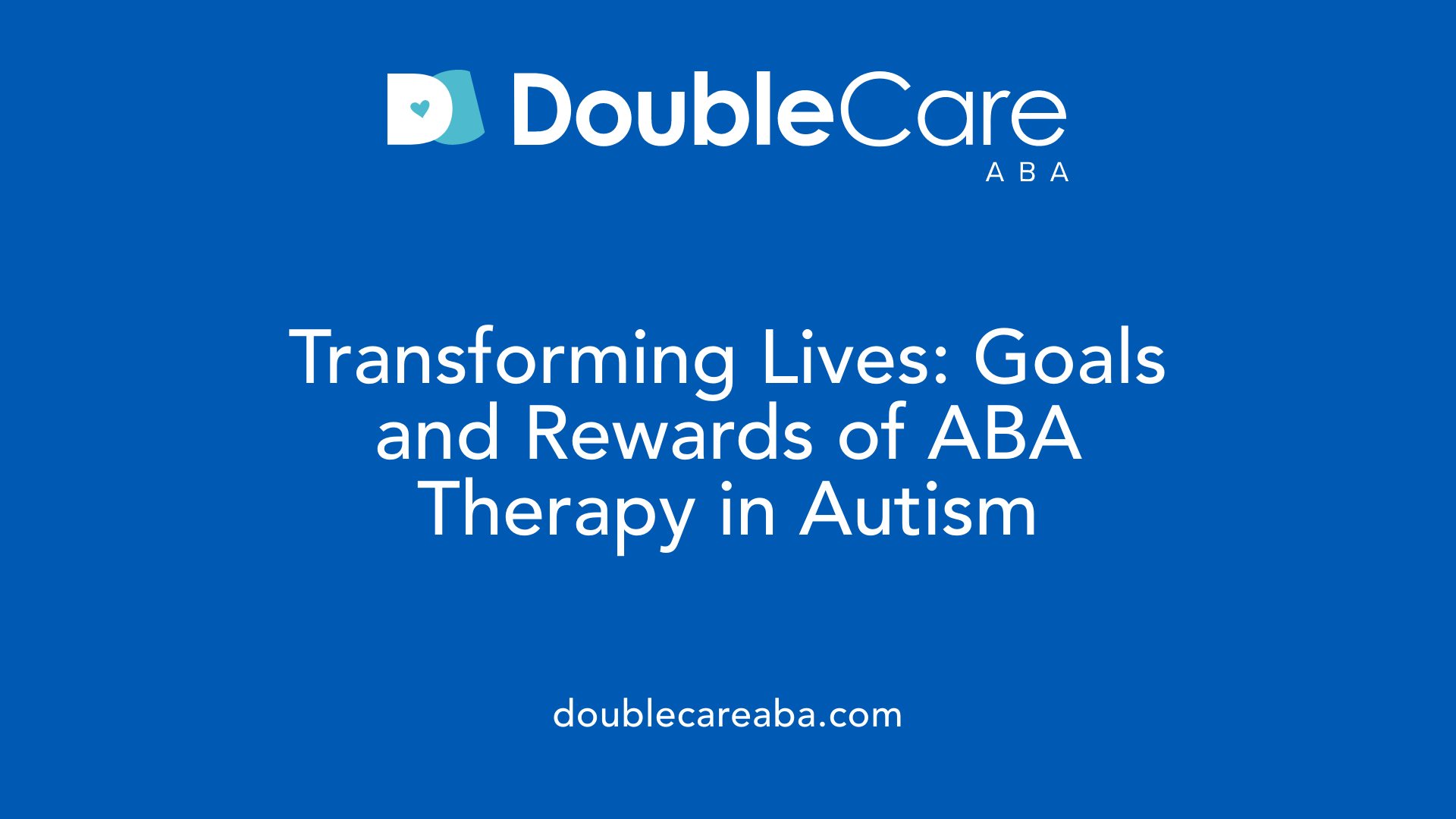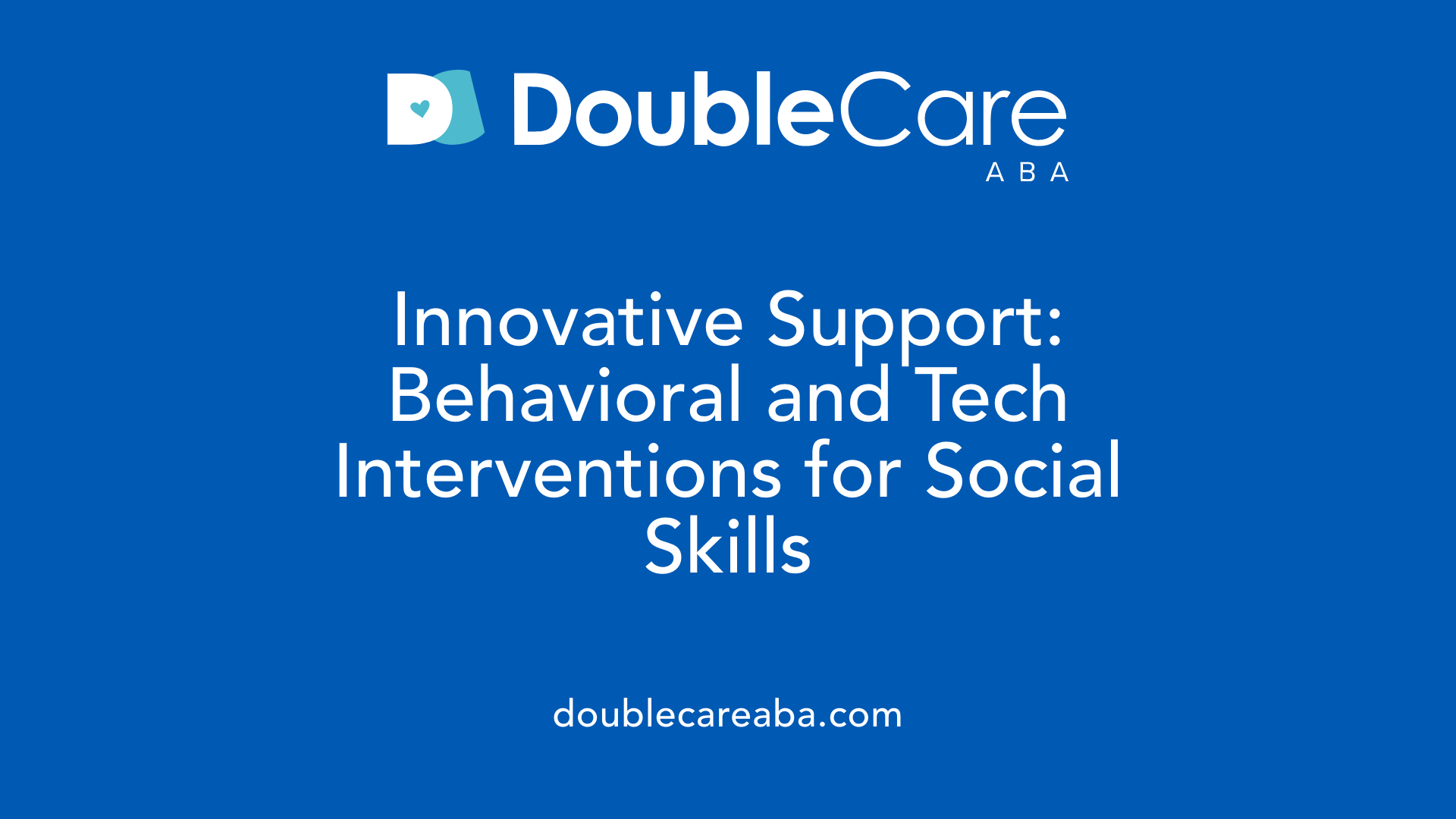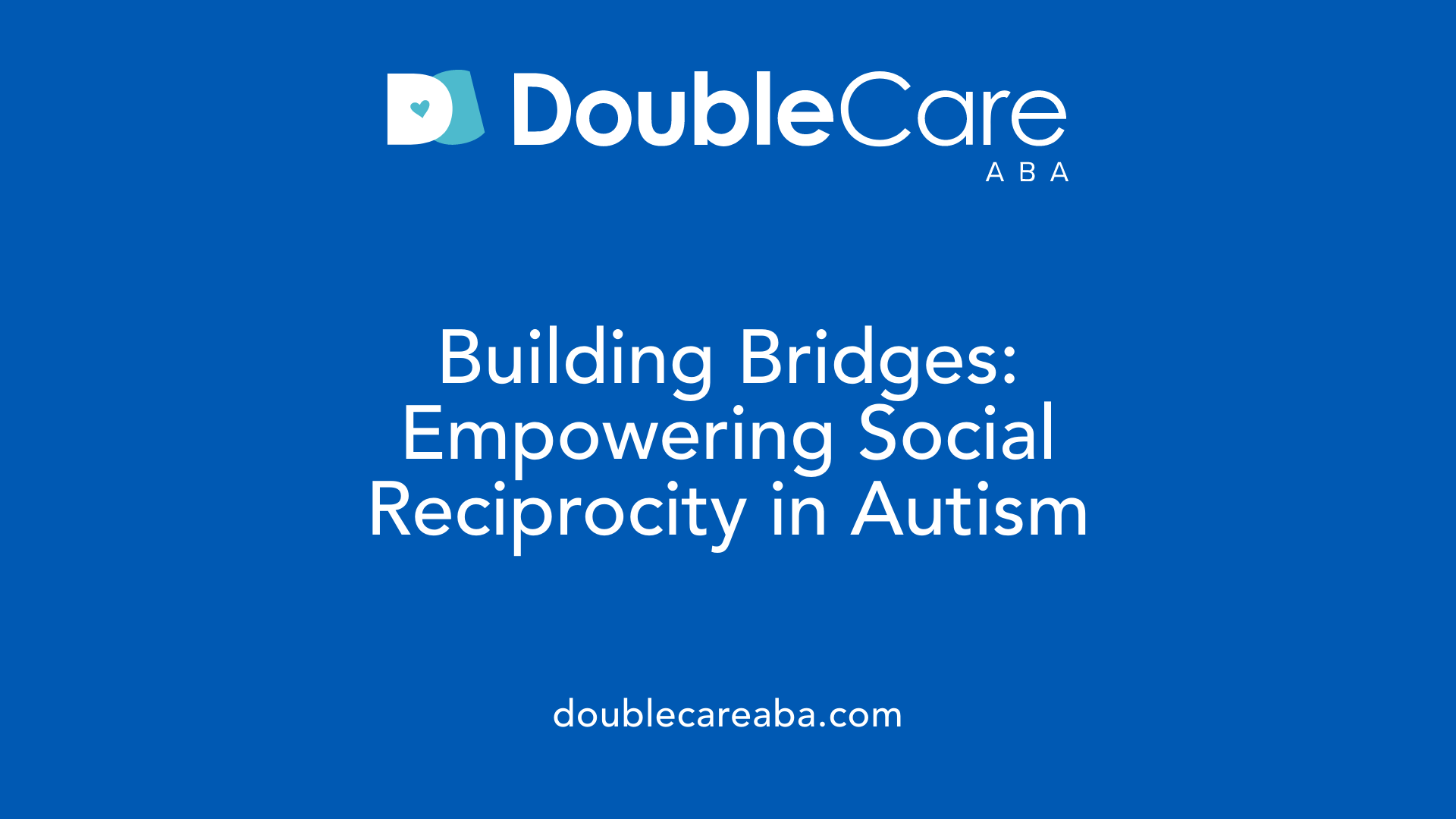Autism and Ways to Strengthen Social Reciprocity
Enhancing Social Interactions in Autism: Strategies and Insights

Understanding Social Reciprocity Challenges in Autism
Social reciprocity, the natural give-and-take in human interaction, is often a significant challenge for individuals with autism spectrum disorder (ASD). Difficulties with initiating and maintaining conversations, interpreting social cues, and exchanging emotions can lead to social isolation and affect overall well-being. This article explores autism-related social reciprocity issues and the therapeutic approaches, particularly Applied Behavior Analysis (ABA), that foster meaningful improvements in social communication skills.
Core Challenges in Social Reciprocity for Individuals with Autism

What challenges do individuals with autism face in social reciprocity?
Individuals with autism spectrum disorder (ASD) often encounter significant challenges in social reciprocity, the ability to engage in balanced, back-and-forth interactions that involve sharing thoughts and feelings mutually. These challenges predominantly manifest in difficulties with initiating and responding appropriately during social exchanges.
Reciprocal social conversation difficulties
One of the hallmark issues is trouble managing reciprocal conversations. Children and adolescents with ASD may respond using short answers, rarely initiate conversations, and infrequently introduce new or relevant information. This limited engagement undermines natural conversational flow and the development of meaningful social exchanges.
Pragmatic language impairments
Pragmatic language—using language effectively in social contexts—is often impaired in individuals with autism. These impairments affect topic management, conversational initiation, and maintaining exchanges. Such pragmatic difficulties contribute substantially to fractured social communication.
Impact on friendships and social isolation
The conversational and pragmatic language difficulties directly impede forming and maintaining friendships. Individuals with ASD frequently experience social withdrawal and increased isolation, which can adversely affect their emotional well-being, self-esteem, and overall quality of life.
Social-emotional reciprocity challenges
Beyond conversational hurdles, individuals with autism often struggle with broader social-emotional reciprocity. This includes difficulty understanding non-verbal cues like facial expressions and body language, leading to social misunderstandings and emotional disconnects.
Early signs of reciprocity difficulties
Early identification of these challenges is crucial. Noticeable early signs in young children include limited eye contact and a lack of interest in peers, which signal the need for timely, supportive intervention to enhance social integration and communication skills.
Applied Behavior Analysis (ABA) Therapy: Foundations and Applications

What is applied behavior analysis (ABA) therapy and how is it used to support individuals with autism?
Applied Behavior Analysis (ABA) therapy is a scientific, evidence-based approach that uses principles of learning and behavior to help individuals with autism develop essential skills while reducing problematic behaviors. ABA focuses on individualized assessment and goal setting, tailoring interventions to each person's unique needs and strengths.
Definition and principles of ABA
ABA centers on teaching socially significant behaviors through systematic reinforcement and repetition. It draws from behavioral theory to understand how behaviors are acquired and maintained, enabling therapists to encourage desirable behaviors like social interaction and communication.
Personalized goal setting
A vital part of ABA therapy is identifying specific, meaningful goals based on each individual's abilities and challenges. These goals might involve improving social reciprocity, such as initiating conversation, maintaining topic relevance, or enhancing non-verbal communication.
Flexible implementation settings
ABA programs are versatile and can be delivered in various environments, including the home, school, and community. This adaptability helps generalize skills across different social contexts and daily routines.
Techniques used in ABA
Key ABA techniques include Discrete Trial Training (DTT), which breaks skills into small steps; Natural Environment Teaching (NET), which uses natural situations for skill practice; social stories; video modeling; and peer-mediated instruction. These are employed to enhance eye contact, joint attention, turn-taking, conversation skills, emotion recognition, and problem-solving.
Importance of data collection and monitoring progress
Continuous data collection is fundamental to ABA therapy. It helps track behavioral changes over time, ensuring interventions are effective and allowing adjustments as needed. This data-driven approach supports evidence-based decision-making and promotes successful learning outcomes.
Through its structured yet flexible framework, ABA therapy aims to empower individuals with autism to achieve greater independence and social participation, ultimately improving their quality of life.
Providers of ABA Therapy and Modes of Delivery

Who typically provides ABA therapy for individuals with autism?
ABA therapy is administered by a range of trained professionals, most notably board-certified behavior analysts (BCBAs), behavior technicians, and licensed psychologists specializing in applied behavior analysis. These experts design and implement individualized interventions targeting social communication, behavior management, and other core challenges associated with autism spectrum disorder (ASD).
Clinic and home-based services
ABA services are offered in various settings, including specialized autism clinics, therapy centers, and home-based programs. Clinic environments provide controlled spaces with access to multiple specialists, while home-based services enable treatment to integrate naturally into daily routines, promoting skill generalization. The choice between settings often depends on the child's specific needs and family preferences.
Caregiver involvement
Caregiver training is a crucial aspect of ABA therapy. Parents and family members learn techniques to support ongoing skill acquisition and behavior management outside therapy sessions. This involvement not only reinforces consistency but also empowers families to sustain progress and troubleshoot challenges in real-time.
Telehealth and accessibility initiatives
To increase accessibility, several providers now offer telehealth options, allowing remote ABA therapy sessions and caregiver coaching. This mode addresses geographical and logistical barriers, particularly in underserved or rural areas. Ongoing efforts aim to expand these services, ensuring more children receive timely, individualized ABA treatment.
| Provider Type | Service Setting | Role and Contribution |
|---|---|---|
| Board-Certified Behavior Analyst (BCBA) | Clinics, Home, Telehealth | Develops and oversees personalized ABA treatment plans |
| Behavior Technicians | Clinics, Home, Telehealth | Implements direct one-on-one interventions |
| Licensed Psychologists | Clinics, Home | Provides assessment and specialized behavioral therapy |
| Caregivers/Parents | Home | Reinforces skills and manages behaviors in daily routines |
| Telehealth Providers | Remote | Delivers coaching and therapy via digital platforms |
Goals and Outcomes of ABA Therapy in Autism

What Are the Typical Goals and Outcomes Associated with ABA Therapy for Autism?
ABA therapy primarily targets the improvement of crucial skills such as communication, social interaction, daily living skills, play, and academics. Each goal is individualized, based on detailed assessments of the child's unique strengths and challenges. This personalized approach ensures that objectives are specific, measurable, and closely aligned with the individual's developmental needs.
Skill Areas Targeted by ABA
ABA techniques focus on teaching eye contact and joint attention, encouraging turn-taking, promoting reciprocal conversations, enhancing verbal and non-verbal communication, understanding emotions and empathy, and improving play and group participation. These areas are vital for tackling social-emotional reciprocity difficulties typical in individuals with autism.
Individualized Goal Setting
Interventions are tailored uniquely for every child, using data-driven methods to set practical, achievable goals. Positive reinforcement strategies are employed to increase desirable behaviors like elaborated conversation and question-asking, while reducing less helpful behaviors.
Measurable Outcomes and Impact
Outcomes from ABA therapy include measurable improvements in social communication skills, such as enhanced elaboration, increased initiation of conversation, and better reciprocal exchanges with peers. These gains support greater independence and smoother integration into social and educational environments. Additionally, self-management techniques introduced in ABA encourage children to regulate their own behaviors, promoting skill generalization and maintenance over time.
Long-Term Benefits
Evidence demonstrates that ABA produces sustained benefits in language development, attention regulation, and overall adaptive functioning. Observers often note improvements in how natural and engaging the child appears during conversations, increasing their desirability as social partners. These benefits contribute substantially to enhancing quality of life, emotional well-being, and self-esteem in individuals with autism.
| Aspect | Description | Examples/Details |
|---|---|---|
| Skill Areas | Communication, social interaction, daily living, play, academics | Eye contact, joint attention, turn-taking, empathy, play skills |
| Individualization | Goals tailored based on assessments | Specific, measurable objectives for each child |
| Intervention Methods | Positive reinforcement, discrete trials, video modeling | Encourage elaborated responses, question-asking |
| Outcomes | Improved social communication, independence, integration | Maintained improvements, generalized to new partners |
| Long-Term Benefits | Sustained language gains, better attention, increased social desirability | Enhanced emotional well-being and self-esteem |
Duration and Structure of ABA Therapy Programs

How long does ABA therapy typically last for individuals with autism?
ABA therapy for autism commonly spans three to five years, although the exact length varies widely based on individual progress and specific needs.
Typical length of therapy
Initial ABA interventions tend to be intensive, with sessions often occurring two to five times per week. Each session may last several hours, providing enough exposure to reinforce learning and skill development. This intensity helps build foundational skills quickly and solidly.
Intensity and session frequency
Early in treatment, high-frequency sessions maximize skill acquisition. As individuals improve, therapy sessions may gradually decrease in intensity and frequency. This reduction supports the transition from structured therapy to more naturalistic and spontaneous use of new skills.
Progress-based adjustments
Therapy plans are regularly reviewed and adjusted based on collected data about the child’s progression. If milestones such as improved communication, social engagement, and self-management are achieved, the therapy intensity might be tailored to focus on maintaining and generalizing these skills.
Criteria for therapy conclusion
Decisions to conclude ABA therapy depend on several factors: meeting personalized goals, consistent skill generalization across settings like home and school, and collaborative discussions with families and professionals. Some individuals might complete therapy sooner due to rapid progress, while others benefit from longer support aligned with their developmental journey.
Advances and Controversies in ABA Therapy Practices

Are there any controversies or criticisms related to ABA therapy?
Applied Behavior Analysis (ABA) has long been a staple in therapies designed to improve social communication and reduce challenging behaviors in children with autism. However, it has faced significant criticisms concerning its methods and underlying philosophy.
Historically, some have raised concerns that ABA focuses excessively on compliance and conformity. Critics argue this approach can overlook the individual's emotional well-being and inadvertently promote distress or trauma. Traditional ABA techniques have sometimes been described as repetitive and demanding, targeting not only disruptive behaviors but also actions that serve as important self-regulation mechanisms, such as stimming. This has led to fears about masking natural behaviors and contributing to mental health challenges.
Contemporarily, the field has increasingly shifted toward more individualized and respectful approaches. Modern ABA practices strive to incorporate play-based interventions, emphasize the child's autonomy, and affirm neurodiversity rather than attempting to normalize behaviors. These updates reflect evolving ethical considerations that place a premium on quality of life and personal dignity.
The ongoing discourse surrounding ABA highlights the critical importance of tailoring interventions according to each child's unique needs and preferences. Ethical application demands transparency, consent, and a focus on empowering the individual. By adapting interventions that encourage self-advocacy and celebrate the child's strengths, ABA therapy continues to evolve in a manner more attuned to neurodiversity and respectful care.
| Aspect | Historical Concerns | Modern Responses |
|---|---|---|
| Emphasis | Compliance and conformity | Individual strengths and autonomy |
| Techniques | Repetitive and potentially stressful | Play-based and supportive |
| Approach to Behavior | Suppressing stimming and natural regulation | Affirming neurodiversity and self-regulation |
| Ethical Focus | Limited consideration of emotional well-being | Person-centered and ethical implementation |
This balance between effectiveness and respect remains a dynamic and essential aspect of advancing ABA therapy in autism care.
Self-Management and Conversational Skill Development in ASD

How can self-management improve social reciprocity in children with autism?
Self-management procedures help children and adolescents with high-functioning autism take control of their own social communication behaviors. By learning to recognize and exchange "conversation points"—which include answering questions, elaborating responses, and initiating questions—these individuals can improve their conversational skills independently.
Such training leads to rapid improvements in giving more detailed answers and asking more questions during conversations. These skills are not limited to familiar settings; they generalize well to conversations with new partners and are maintained over time.
Improvement of question-asking and elaboration
Self-management encourages children to elaborate their responses rather than giving short answers, and to engage more actively by asking questions. This behavior promotes richer, balanced interactions and advances social reciprocity, helping children participate more fully in conversations.
Generalization of conversational skills
One notable benefit of self-management is the generalization of improved social communication across different settings and partners. Children do not rely solely on external prompts, enabling them to adapt their skills flexibly in real-world interactions.
Promoting self-regulation and independence
By fostering self-regulation, self-management supports children in independently monitoring their conversational behaviors. This reduces dependence on adults or therapists and encourages autonomy in social exchanges.
Social validity and peer perceptions
Post-intervention observations by unaware individuals show that children demonstrate more natural, interested, and desirable conversational behaviors. This positive change enhances peer relationships and can reduce social isolation experienced by children with autism.
Overall, self-management procedures offer effective, portable, and empowering strategies for improving social reciprocity and conversational competence in children with autism spectrum disorder.
Behavioral and Technological Interventions Supporting Social Reciprocity

What behavioral strategies support social reciprocity in children with ASD?
Behavioral strategies such as Differential Reinforcement of Alternative (DRA), Incompatible (DRI), or Other behaviors (DRO) are used to encourage positive social interactions by reinforcing desirable behaviors while decreasing unwanted ones. Response Interruption/Redirection (RIR) interrupts inappropriate behaviors and guides the individual toward appropriate social responses. Extinction (EXT) involves withholding reinforcement for negative behaviors, gradually reducing their frequency. These approaches help children learn and maintain effective social reciprocity skills.
Which intervention models are effective in improving social communication?
Several evidence-based intervention models support children with autism in developing social reciprocity:
- Activity-Based Intervention (ABI): Integrates learning into everyday activities to promote natural engagement.
- Discrete Trial Training (DTT): Uses structured, repeated trials to teach specific skills.
- Developmental, Individual-Difference, Relationship-Based (DIR/FLOOR TIME): Focuses on emotional and relational development through play and emotional attunement.
These interventions tailor teaching strategies to the child's individual needs, promoting communication skills and social exchanges.
How does assistive technology enhance social skills?
Assistive Technology (AT) incorporates specialized equipment designed to increase the functional capabilities of individuals with autism. Examples include communication apps, tablets, and devices that support expressive and receptive language. By facilitating interaction and communication, AT can reduce barriers related to social reciprocity and increase engagement in conversations.
What role do video modeling and social skills training play?
Video Modeling (VM) employs video demonstrations of appropriate social behaviors, allowing learners to observe and imitate effective interactions. Social Skills Training (SST) uses role-playing, peer interaction, and direct teaching to build competencies such as turn-taking, initiating conversation, and understanding social cues. These tools have demonstrated success in improving reciprocated conversations and social confidence.
Why is Functional Behavior Assessment important?
Functional Behavior Assessment (FBA) systematically identifies the reasons behind challenging behaviors that interfere with social reciprocity. Understanding these triggers allows practitioners to design individualized interventions that reduce obstacles and reinforce positive social communication, ultimately enhancing the child's ability to engage in reciprocal interactions.
Role of Families and Supportive Environments in Enhancing Social Skills

How Can Parents Be Involved in ABA for Social Skills Development?
Parents play a crucial role in reinforcing the skills learned during Applied Behavior Analysis (ABA) therapy. ABA is highly individualized and focuses on teaching positive social behaviors while reducing challenges. By engaging actively, parents help apply consistent practice and reinforcement outside clinical settings, enhancing generalization of social skills such as eye contact, turn-taking, and conversational exchanges.
What Home-Based Support Strategies Are Effective?
Supporting social skills development at home involves several practical strategies:
- Encouraging playdates enables children to practice real-life social interactions.
- Modeling appropriate social behaviors provides a live example for children to follow.
- Practicing conversation skills in comfortable environments promotes confidence.
- Providing positive reinforcement increases motivation to engage socially.
These strategies help bridge therapeutic goals with everyday social experiences.
Why Is Modeling and Practicing Social Behaviors Important?
Modeling serves as a powerful tool by demonstrating appropriate social cues, reactions, and conversational flow. Practicing these behaviors repeatedly helps children with autism understand expectations and build comfort in social settings. Role-playing and scenario rehearsals are often employed to refine social problem-solving and reciprocity skills.
How Do Visual Supports and Social Scripts Aid Social Skill Acquisition?
Visual supports and social scripts simplify complex social interactions by breaking them down into clear, manageable steps. These tools help children anticipate conversational elements, respond appropriately, and engage more confidently. They are especially beneficial for children who struggle with spontaneous social exchanges.
What Role Do Patience and Respect Play in Supportive Interactions?
Creating an environment characterized by patience and respect is vital. This means communicating clearly and directly, acknowledging individual differences, and focusing on strengths and shared interests. Such an approach fosters trust and encourages children to participate actively without fear of judgment.
Families' active involvement combined with supportive environments significantly enhances social communication skills in children with autism. By integrating these approaches, children gain opportunities to engage more meaningfully in social interactions, thereby improving their quality of life.
Empowering Individuals with Autism Through Social Reciprocity Development

Promoting Self-Advocacy
Empowering individuals with autism begins by encouraging self-advocacy. This involves teaching children and adolescents to understand and express their own needs and preferences in social settings. Self-advocacy enables them to participate more actively in conversations and helps develop stronger social bonds.
Building Confidence and Resilience
Confidence-building is crucial in overcoming social challenges associated with autism. Celebrating small successes, such as maintaining eye contact or successfully asking a question, reinforces positive behaviors. These achievements support resilience by encouraging children to continue practicing and improving their social skills despite setbacks.
Celebrating Small Successes
Recognizing and praising incremental progress helps maintain motivation and fosters a positive self-image. Whether it’s elaborated responses in conversation or initiating exchanges, these victories empower individuals to engage more fully and naturally with peers.
Fostering Mutual Interests
Shared interests are the foundation of reciprocal social interaction. Encouraging children to explore and engage in activities with others who share similar passions nurtures natural give-and-take relationships. This approach supports developing conversational reciprocity and emotional connections.
Personalized Intervention Programs like ChildWise ABA
Programs such as ChildWise ABA provide tailored interventions centered on individual strengths and needs. By focusing on personalized goals, these programs enhance social reciprocity skills through evidence-based methods. The emphasis on self-management, conversational skill building, and naturalistic teaching ensures that improvements generalize across settings and partners.
Together, these strategies offer a comprehensive approach that empowers individuals with autism to develop meaningful social connections and improve their overall quality of life.
Toward Better Social Engagement and Quality of Life
Improving social reciprocity for individuals with autism is vital for fostering meaningful relationships, enhancing emotional health, and promoting overall quality of life. Evidence-based interventions such as ABA therapy, complemented by self-management strategies, behavioral techniques, and assistive technologies, offer effective avenues for skill development. Equally important is the role of families, educators, and communities in creating supportive environments centered on respect and individual strengths. As research advances and approaches evolve, fostering empathy, autonomy, and resilience remains at the core—enabling individuals on the spectrum to engage more naturally and confidently in the dynamic dance of social interaction.
References
- Using Self-Management to Improve the Reciprocal Social ...
- Intervention and Therapies
- Reciprocity in Autism Spectrum Disorder - Childwise ABA
- ABA Therapy for Enhancing Social Skills in Children with Autism
- The Controversy Around ABA
- Is ABA therapy harmful? The controversy explained
- Debunking 7 Common Myths About ABA Therapy - GSEP Blog
- Why Does ABA Therapy Get a Bad Rap?















